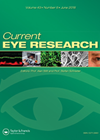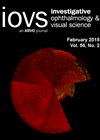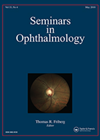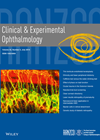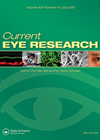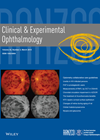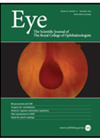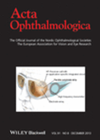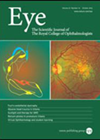
Journal Reviews
Conjunctival inflammation in glaucoma patients
Numerous studies have demonstrated that topical medications and preservatives used for the management of glaucoma can induce significant histopathologic and inflammatory changes in the ocular surface. This study describes an increased expression of major histocompatibility complex class II antigen HLA-DR,...
Implantation of intraocular pressure sensor in glaucoma patients
The authors report safety and accuracy of an intraocular intraocular pressure (IOP) sensor placed in the ciliary sulcus during planned cataract surgery. Six patients underwent implantation of the device; a silicone rubber ring-shaped device encapsulating pressure sensitive capacitors and a...
Brn3b neuroprotective effect in rat glaucoma model
An adeno-associated virus-directed overexpression of the Brn3b protein in hypothesised to confer neuroprotective effects in this paper. This is ultimately tested in a well-accepted rat glaucoma model (Morrison’s model: saline injection into episcleral veins of rat eyes with a force...
Long scleral tunnel technique to prevent tube exposure of Ahmed glaucoma valve
This retrospective study was done to evaluate the efficacy of long scleral tunnel technique and compare it with pericardium patch graft in preventing tube exposure of Ahmed glaucoma valve. Seventy-eight eyes of 73 patients were included. In group 1 patients,...
Effect of phacoemulsification on trabeculectomy function
Previous studies have reported cataract surgery post trabeculectomy to be detrimental to IOP control. Conversely, other studies have reported phacoemulsification performed before trabeculectomy as a factor for bleb failure. The objective of this retrospective case control study was to evaluate...
Comparison of ganglion cell thinning in glaucoma vs. macular hole repair
This prospective study compared the changes in the photopic negative response of the focal macular electroretinogram (fmERG) caused by retinal ganglion cell complex (GCC) thinning at the macula between patients with open angle glaucoma (OAG) and 12 months after successful...
Prostaglandin associated periorbitopathy
Prostaglandins are known to cause periorbital adverse effects. The aim of this retrospective case series was to compare the frequency of prostaglandin associated periorbitopathy (PAP) between bimatoprost, latanoprost and travoprost users. Five PAP findings were evaluated: upper lid ptosis, deepening...
Long-term outcomes following surgery for traumatic cyclodialysis clefts
This retrospective case series evaluated the long-term visual prognosis and intraocular pressure control following surgical treatment of traumatic cyclodialysis clefts. Cyclodialysis clefts result from the disinsertion of the longitudinal ciliary muscle fibres from the scleral spur and occur as a...
Visual impairment in patients with glaucoma
This retrospective observational study assessed the prevalence of end-of-life visual impairment in patients with glaucoma. A total of 122 deceased patients followed for glaucoma were included and data was collected from patient notes. Sixty-one patients had open-angle glaucoma and 61...
Chronic drop use and trabeculectomy on tear osmolarity
Ocular surface disease (OSD) is common in patients chronically treated for glaucoma. This may be related to the drug itself but often to the preservatives in the medication. Much work has been done on the most common preservative, benzalkonium chloride...

